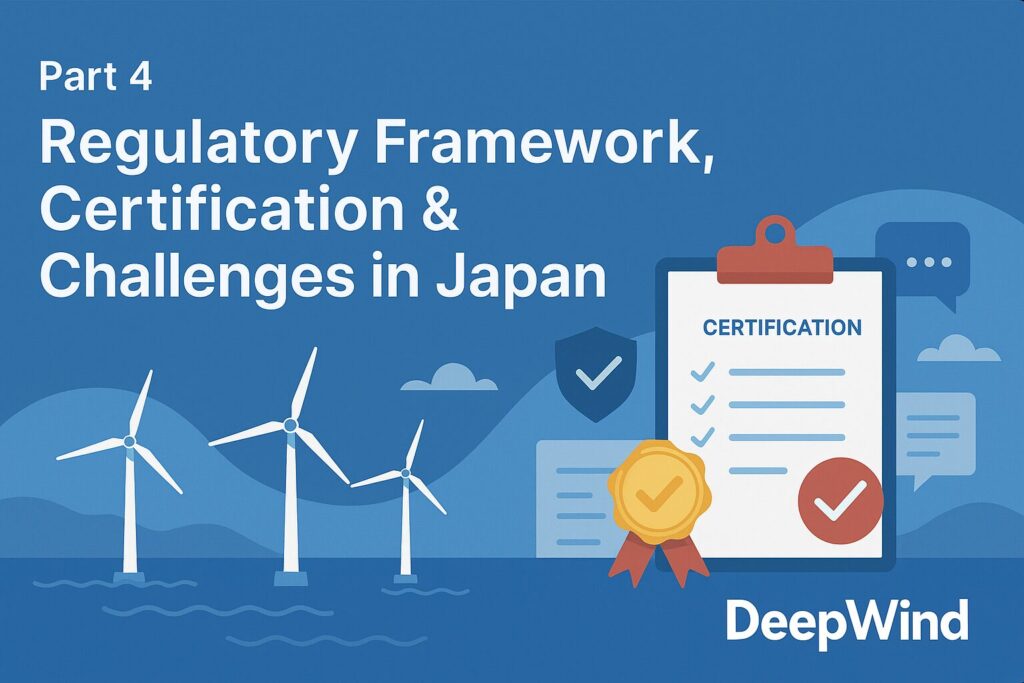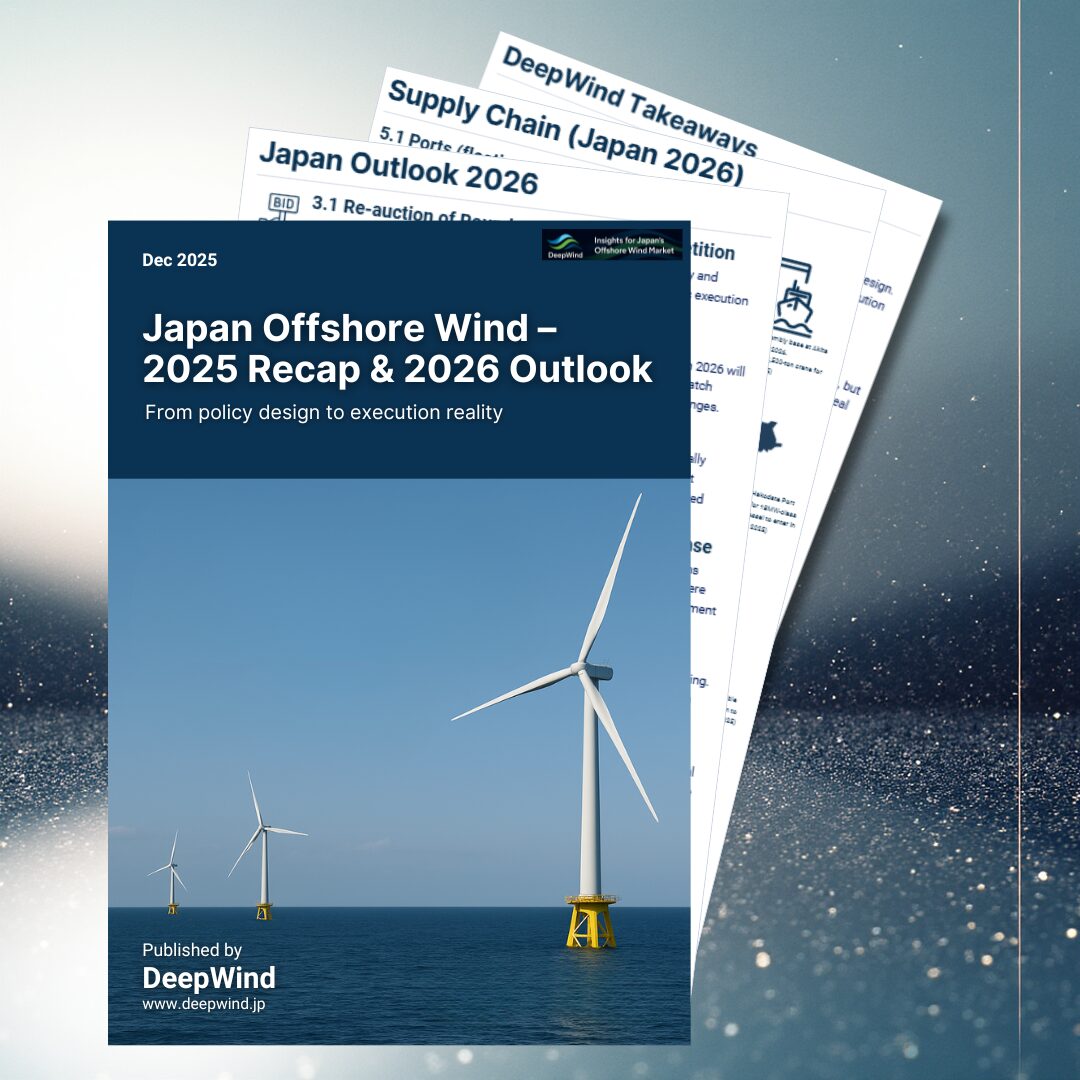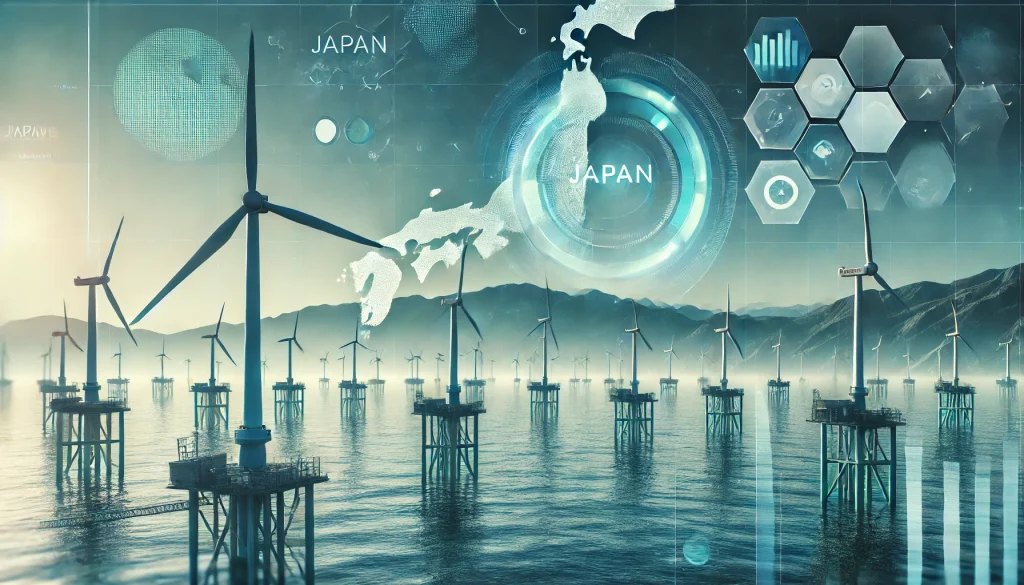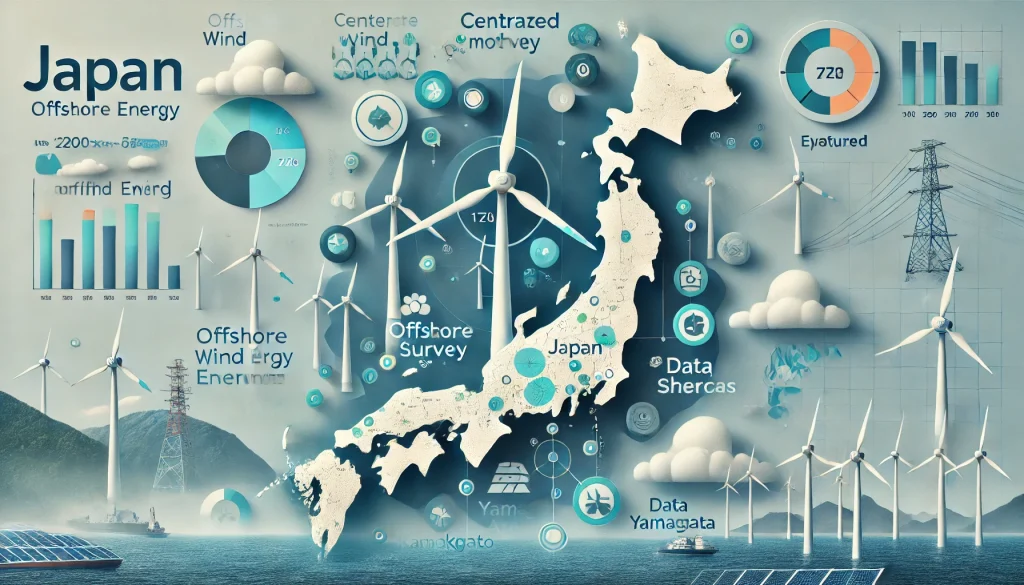Introduction
Commercializing floating offshore wind in Japan requires more than just advanced engineering—it demands a deep understanding of the country’s legal framework, international and domestic certification processes, and the unique environmental and logistical risks of Japanese waters. In this article, we explore the Offshore Renewable Energy Act (“Marine Renewable Energy Act”), its recent amendments, the step-by-step certification and testing under IEC/EN standards, and the specific challenges posed by Japan’s port infrastructure, typhoons, earthquakes, and supply chains. We then propose practical measures and stakeholder collaboration strategies to maximize project success.
While this article dives into a specific topic, we recommend starting with this summary article for a full understanding of floating offshore wind’s key structures and technologies:
👉 The Basics of Floating Offshore Wind: Key Structures and Technologies
While this article focuses on a specific topic, those looking to understand Japan’s overall offshore wind policy and regulatory framework should also read our comprehensive summary here:
👉 Japan’s Offshore Wind Policy & Regulatory Framework: Laws, Permits, and Support Schemes
1. Offshore Renewable Energy Act & Regulatory Framework
The Marine Renewable Energy Act, enforced in 2021, establishes a transparent, long-term framework for offshore renewable projects. Key features include:
- Designation of Promotion Zones:
Each year, the government selects about 1 GW of candidate sea areas—after environmental assessments—as “Promotion Zones.” Developers receive 30-year seabed leases, ensuring project stability and bankability. - Expansion into the EEZ (June 2025 Amendment):
The 2025 revision empowers the Minister of Economy, Trade and Industry to designate Promotion Zones within Japan’s Exclusive Economic Zone, unlocking vast deep-water sites and enabling water depths over 100 m. - Environmental Assessment Exemptions:
Within Promotion Zones, certain phases of the Environmental Impact Assessment (EIA) process are streamlined. Common survey data can be shared among projects, and public comment procedures are partially digitized to shorten lead times. - Transparent Public Tendering:
After zone designation, developers compete via public tender. Evaluation criteria include technical capability, financial strength, and the comprehensiveness of local stakeholder engagement plans, ensuring that fishermen and municipalities are consulted early. - Subsidies & Technical Support:
NEDO’s Green Innovation Fund and regional revitalization grants subsidize feasibility studies, pilot demonstrations, and community engagement, accelerating technology validation and local buy-in.
2. Certification & Testing Process (IEC/EN Compliance)
Floating offshore wind systems in Japan adhere to IEC 61400-3 and supplementary guidelines from DNV GL (now DNV), ClassNK, and other societies. The typical certification and testing workflow includes:
- Design Review:
Submit detailed design documents for the turbine, platform, and mooring system. Certification bodies review static stability (metacentric height), dynamic response analyses, fatigue life predictions, and local seismic considerations. - Factory Acceptance Tests (FAT):
Perform functional and environmental tests on major turbine components (blades, nacelle, hub), electrical cabinets, and control systems at the manufacturing facility, including salt-spray and vibration endurance tests per IEC standards. - Site Acceptance Tests (SAT):
After installation, conduct anchor load tests, mooring line tension measurements, and dynamic response trials offshore. Regional wave spectra and tidal variations are factored into test conditions. - Integrated & Environmental Monitoring:
During initial operation (typically the first six months), continuously monitor power output, vibration, noise, and marine life interactions. Adaptive management protocols allow operational parameters to be modified in response to unexpected impacts. - Commissioning Certification:
Once all trials pass, the certification body issues the final commissioning certificate. Annual audits and periodic inspections are then mandated throughout the project lifetime.
3. Japan-Specific Construction & Environmental Risks
Japan’s combination of deep-water coasts, frequent typhoons, and seismic activity introduces distinct risks. Key concerns and mitigation strategies include:
- Port Infrastructure Constraints:
Many regional ports lack deep-draft berths, large-area assembly yards, and heavy-lift cranes. Solutions include forming port consortiums, public–private investment in dedicated berths, and hybrid strategies that combine onshore module assembly with offshore tow-and-install operations. - Typhoon & High-Sea Conditions:
Japan’s typhoon season (August–October) can bring gusts over 70 m/s and 10 m waves. Mitigation requires clustering installation windows in winter months, emergency evacuation protocols, and reserved safe-haven piers to protect equipment and personnel. - Earthquake & Tsunami Design:
Submarine sediment liquefaction and high-intensity ground motions demand enhanced safety margins. Recommended measures include seabed reinforcement, seismic dampers on floating structures, and structural redundancy to withstand tsunami inundation forces. - EPC Experience Gaps:
Japanese engineering firms have limited track records in large-scale offshore wind EPC contracts. Joint ventures with European EPC leaders, secondments for knowledge transfer, and leveraging NEDO demonstration projects can build local expertise and confidence. - Supply Chain Vulnerability:
Heavy reliance on imported turbines and subsea cables exposes projects to currency and shipping disruptions. Developing domestic fabrication lines for floating modules, incentivizing local electrical and control equipment production, and diversifying suppliers can reduce these risks.
4. Stakeholder Collaboration Best Practices
Overcoming regulatory, certification, and logistical challenges demands early and ongoing collaboration among government agencies, industry, and local communities. Consider the following approaches:
- Engage in Government Working Groups:
Participate in cross-ministerial task forces at METI, MOE, and MAFF to influence policy updates, technical guidelines, and local implementation frameworks. - Early Fisheries & Municipal Consultations:
Conduct joint surveys with fishing cooperatives, develop fishery compensation packages, and draft benefit-sharing agreements. Regular community workshops ensure transparency and trust. - Adaptive Environmental Management:
Implement phased monitoring plans for marine ecosystems and water quality. Use real-time data to adjust mooring layouts or operational schedules under an adaptive management protocol. - Certification Body Partnerships:
Negotiate long-term verification agreements with DNV, ClassNK, or BV from the design phase onward. An “agile certification” approach accelerates design iterations and test feedback loops. - Skills Development & Knowledge Transfer:
Support training programs led by NEDO and universities, embed engineers in pilot projects for on-the-job learning, and arrange exchange programs with experienced European teams to build a skilled domestic workforce.
Conclusion & What’s Next
In this installment, we dissected Japan’s legal framework, certification pathways, and the environmental and logistical challenges unique to its coasts. Mastery of these elements—coupled with robust stakeholder collaboration—will dramatically boost the likelihood of successful floating offshore wind projects. In Part 5, we will analyze case studies of commercial and demonstration projects in Japan and abroad, extracting key lessons on success factors and pitfall avoidance. Stay tuned!
To further explore the fundamental structures and design concepts of floating offshore wind, check out our in-depth overview here:
🌊 The Basics of Floating Offshore Wind: Key Structures and Technologies
For a broader understanding of Japan’s offshore wind legal system, policy structure, and support measures, be sure to check out our pillar article:
🌊 Japan’s Offshore Wind Policy & Regulatory Framework: Laws, Permits, and Support Schemes
Explore more categories at DeepWind:
- 🔍Market Insights – Understand the latest trends and key topics in Japan’s offshore wind market
- 🏛️Policy & Regulations – Explore Japan’s legal frameworks, auction systems, and designated promotion zones.
- 🌊Projects – Get an overview of offshore wind projects across Japan’s coastal regions.
- 🛠️Technology & Innovation – Discover the latest technologies and innovations shaping Japan’s offshore wind sector.
- 💡Cost Analysis – Dive into Japan-specific LCOE insights and offshore wind cost structures.



